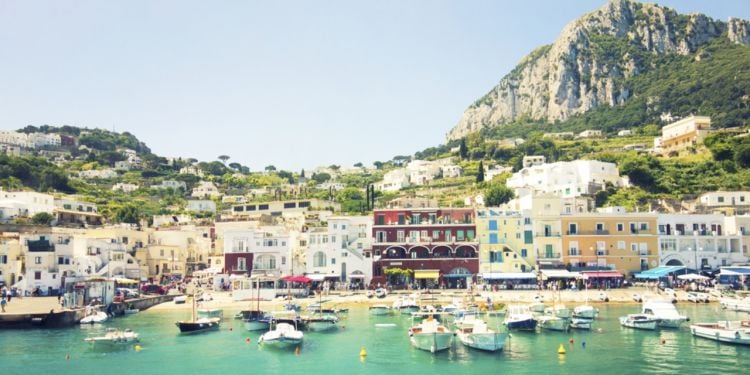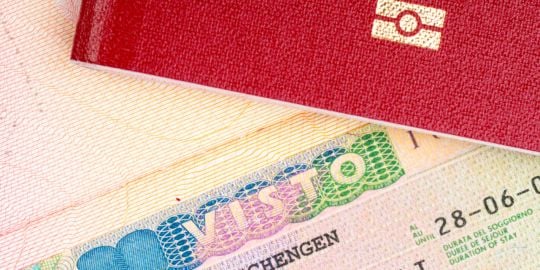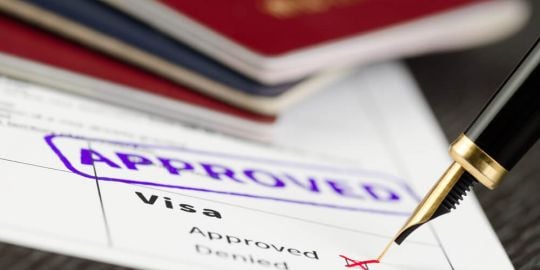Applying for a residence permit in Italy

If you have decided to settle in Italy, you may need to apply for a visa, especially if you come from a country outside the European Union. Did you know that even if you are an EU citizen, you are required to apply for a residence permit in the city where you want to live? This residence permit is different from all other permits. In this article, we explain the difference and give you an overview of the permits and visas you will need for your long-term stay in Italy.
Who needs a residence permit in Italy?
As an EU citizen, if you are traveling in Italy for a period of less than or equal to 90 days, you do not need a residence permit. Furthermore, you are not required to report your presence to the Questura of your city of destination within eight days of your arrival on Italian territory. This procedure is only required for third-country nationals. As an EU citizen, you are free to move around in Italy as in any other country in the Schengen area.
Any European citizen who intends to settle in Italy on a long-term basis and for a period of more than 90 days must apply for a residence permit. This means that you have to register at the anagrafe, the civil registry of your town hall, in order to apply for residence in Italy.
In order to complete the application for residence, you will need to provide the following:
- an address of habitual residence;
- proof of a contract of employment or of an independent professional situation (e.g., VAT number);
- proof of sufficient funds, in case you are not employed.
Good to know:
After your registration in the civil registry of the town hall, if you reside in Italy continuously for more than five years, you acquire the right of permanent residence in the national territory.
How to apply for residence in Italy
Foreigners from the European Union must apply for residence at the Anagrafe, the civil registry office of the Town Hall. When submitting your request, you must provide the following documents:
- The application form duly completed and signed for you alone or all family members (this form is usually available on the website of the town hall of the city of destination) ;
- a copy of your codice fiscale, an identification number that you will have previously requested from the Italian consulate before leaving your home country or that you can request from the Agenzia delle Entrate, the Italian tax agency;
- a passport (or another identity document) and the passport of any other family member who wishes to become a resident in Italy. For EU citizens, a national identity card is sufficient. Remember to bring the original as well as photocopies of the following:
- the rental contract for your home in Italy or a certificate from the owner of the home stating that you are living with them permanently;
- your employment contract or self-employed status in Italy (e.g., VAT number and certificate of registration with the Agenzia delle Entrate);
- if you are not employed: proof of sufficient funds (the Commune requires a self-declaration based on gross annual amounts) and proof that you have health insurance valid in Italy for at least one year;
- a household composition issued by the consulate of your country of origin, translated and legalized by an Italian translator.
As part of your application for residency in Italy, you will also be asked to fill in the form for the payment of the TARI tax, which covers the cost of waste disposal in the municipality of residence. To do this, fill in your form with your personal details, your codice fiscale (tax code), as well as information about your home: the size, the number of people living in it, and the date you started renting (or buying) the home. You may not have to pay the tax directly to the municipality. However, some landlords include it in the monthly rent, so check before you start.
Good to know:
In cities such as Milan and Rome, the procedure for applying for residency has been simplified, and it is possible to apply online for yourself and your family members. For example, the Milan City Council website provides a practical guide that lists the formalities to be followed and the documents to be provided.
Types of residence permits in Italy
There are several types of residence permit for Italy, some of which are directly related to the type of visa you need to enter Italy. Note that expatriates from outside the EU can only apply for a residence permit, while EU citizens can apply for a residence certificate, certificato di residenza.
Certificato di residenza
This residence permit is valid only for EU citizens. It is obtained by applying for residence at the town hall following the procedure indicated above. After five consecutive years of residence in Italy, it is possible for these nationals to apply for permanent residence in Italy.
Permesso di Soggiorno (residence permit)
This residence permit concerns third-country nationals. It has a limited duration but can be renewed. As the residence permit is linked to the visa for entry into Italian territory, its duration depends on the reasons for your trip communicated at the time of the visa application, for example:
- Tourism, business: the residence permit will be valid for a maximum of three months
- Seasonal work: the residence permit will be valid for a maximum of 9 months
- Family reunion: the residence permit will be valid for a maximum of 12 months
- Study or professional training: the residence permit will be valid for a maximum of 12 months
- Employed or self-employed work: the residence permit will be valid for a maximum of 24 months.
Other types of residence permits are also provided by the immigration service in the Testo Unico Immigrazione. It should be noted that a residence permit for an indefinite period of time can also be issued. This is the permesso di soggiorno per soggiornanti di lungo periodo, which is issued for an indefinite period of time to citizens of third countries and/or stateless persons who have been residing legally and continuously in Italy for at least five years.
Good to know :
There are many benefits to applying for a residence certificate in Italy, such as a tax credit on the purchase of property and other municipal tax reductions. It also allows you to register and benefit from the National Health Service, Servizio Sanitario Nazionale, as well as services such as social protection, maternity leave and parental leave. You will also obtain a tessera sanitaria, which is necessary to receive healthcare in Italy.
Conditions for obtaining a residence permit in Italy
To be eligible for residence in Italy as a third-country national, you have to comply with the general requirements established by law, such as:
- possession of an entry visa, which depends on the reasons for your move to Italy (work, study, etc.);
- legal entry, in accordance with the general requirements and conditions set out in the immigration law;
- submission of the application for a residence permit to the Questura within 8 working days of your arrival in Italy.
To obtain your residence permit in Italy, you will also need to provide a Nulla Osta, which is an authorization issued by the Sportello Unico per l'immigrazione (SUI), an immigration service active in all prefectures. This document is essential in the visa application procedure. The Nulla Osta can be requested in the following cases:
- if you have found a job before arriving in Italy (in this case, the employer has to apply for it),
- if it is a family reunion,
- if you wish to convert a residence permit, for example, a student or trainee, into an employed residence permit.
As you might have understood, obtaining a residence permit is linked to a visa.
Good to know :
If you apply for a residence permit in Italy based on a work visa (employed or self-employed), you will have to prove that you have sufficient income. You will be asked to do the same when applying for the renewal of your visa and residence permit.
In some exceptional cases, the Immigration Act provides for the issuance of a residence permit without an entry visa, for example, if there are emergencies related to the protection of minors, certain medical care, or a humanitarian situation.
Documents needed to obtain a residence permit
Once you have arrived in Italy, after presenting your entry visa at customs, the next step is to go to the local authorities, in this case, the Questura provinciale, in your destination city within eight days of your arrival in the country. To apply for residency in Italy, make sure you have the following documents ready:
- A copy of your identity document, in this case, your passport;
- Four passport photos, plus those of any minor children to be included in the permit;
- Your entry visa for Italy;
- A tax stamp of 16€ ;
- A copy of your tax code, to be requested from the Italian tax agency, Agenzia delle Entrate, if you did not request it from the Italian consulate before leaving your home country;
- Proof of residence: certificate of residence or declaration of hospitality.
Good to know:
Depending on the type of residence permit and, therefore, the visa you are applying for, you may be asked to provide other documents.
Costs of a residence permit in Italy
In addition to the costs of issuing your visa for Italy, you will also have to pay the costs of the residence permit. The amount of the contribution here will depend on the duration of your visa and permit:
- €40 for residence permits lasting more than three months and up to one year
- 50 € for residence permits of more than one year and up to two years
- 100 € for the issue of an EU long-term resident permit (permesso di soggiorno per soggiornanti di lungo periodo)
If you wish to obtain your residence permit in electronic format, you will be asked to pay post mail fees of €30 plus €16 in tax stamps. You will then have to pay €30.46 in addition to the costs mentioned above for the Smart Card (residence card with chip), depending on the type of residence permit you need.
How to renew your residence permit in Italy?
Application for the renewal of your residence permit in Italy must always be made at the competent Questura for the province where you live. Furthermore, all applications must be made at least two months (60 days) before the expiry date of your permit in order to give the authorities time to verify your personal case and the conditions of your visit to Italy. If you are settling in Milan, for example, you can find relevant information on the Questura di Milano website.
How to convert your residence permit in Italy
To convert a residence permit already in your possession, you must request a nulla osta from the Sportello Unico per l'Immigrazione (SUI) of the prefecture competent for the territory in which you have taken up residence and then, once you have obtained it, you can officially apply for the conversion at the Questura. Please note that the requirements for the conversion of your permit are:
- the quotas provided for in the decree on the programming of migratory flows;
- the currently valid residence permit.
Useful links :
Ministry of Foreign Affairs - Visa and residence permits









